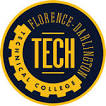What do they do?
Set up, operate, or tend drilling machines to drill, bore, ream, mill, or countersink metal or plastic work pieces.
Also known as:
Bore Mill Operator, CNC Drilling Operator (Computer Numerical Control Drilling Operator), CNC Machinist (Computer Numerical Control Machinist), Drill Operator, Drill Press Operator, Drill Setup Operator, Driller, Machine Operator, Punch Operator, Radial Drill Operator, Setup Mill Operator, Setup Technician
-
0%
Change
Ranks #15 in job growth rate20Job Openings
Ranks #10 in net job growth
Best colleges for Drilling and Boring Machine Tool Setters, Operators, and Tenders, Metal and Plastic
Colleges with the most graduates that become Drilling and Boring Machine Tool Setters, Operators, and Tenders, Metal and Plastic
Looking for colleges that offer a specific major? Use the College Match Tool to find your best-matched schools and discover your estimated Net Price!
- High school diploma equivalent (47%)
- Some college, no degree (29%)
- Less than high school diploma (15%)
- Associate's degree (5%)
- Bachelor's degree (2%)
- Master's degree (2%)
- Doctorate or Professional Degree (<1%)
People in this career often know a lot about:
- Mathematics - Knowledge of arithmetic, algebra, geometry, calculus, statistics, and their applications.
- Production and Processing - Knowledge of raw materials, production processes, quality control, costs, and other techniques for maximizing the effective manufacture and distribution of goods.
- Mechanical - Knowledge of machines and tools, including their designs, uses, repair, and maintenance.
- English Language - Knowledge of the structure and content of the English language including the meaning and spelling of words, rules of composition, and grammar.
- Engineering and Technology - Knowledge of the practical application of engineering science and technology. This includes applying principles, techniques, procedures, and equipment to the design and production of various goods and services.
- Education and Training - Knowledge of principles and methods for curriculum and training design, teaching and instruction for individuals and groups, and the measurement of training effects.
People in this career often have talent in:
- Control Precision - The ability to quickly and repeatedly adjust the controls of a machine or a vehicle to exact positions.
- Arm-Hand Steadiness - The ability to keep your hand and arm steady while moving your arm or while holding your arm and hand in one position.
- Near Vision - The ability to see details at close range (within a few feet of the observer).
People in this career often do these activities:
- Measure dimensions of completed products or workpieces to verify conformance to specifications.
- Read work orders or other instructions to determine product specifications or materials requirements.
- Study blueprints or other instructions to determine equipment setup requirements.
- Review blueprints or other instructions to determine operational methods or sequences.
- Drill holes in parts, equipment, or materials.
- Align parts or workpieces to ensure proper assembly.
- Draw guide lines or markings on materials or workpieces using patterns or other references.
- Replace worn equipment components.
- Set equipment controls to meet cutting specifications.
- Mount materials or workpieces onto production equipment.
- Watch operating equipment to detect malfunctions.
- Lift materials or workpieces using cranes or other lifting equipment.
- Signal others to coordinate work activities.
- Adjust equipment controls to regulate coolant flow.
- Mount attachments or tools onto production equipment.
- Assemble metal or plastic parts or products.
- Operate grinding equipment.
- Sharpen cutting or grinding tools.
This page includes data from:

 Occupation statistics: USDOL U.S. Bureau of Labor Statistics Occupational Employment Statistics
Occupation statistics: USDOL U.S. Bureau of Labor Statistics Occupational Employment Statistics












